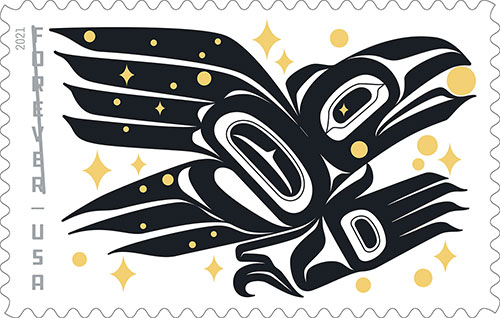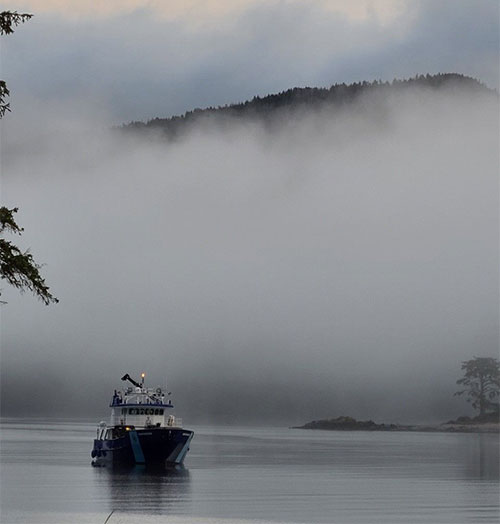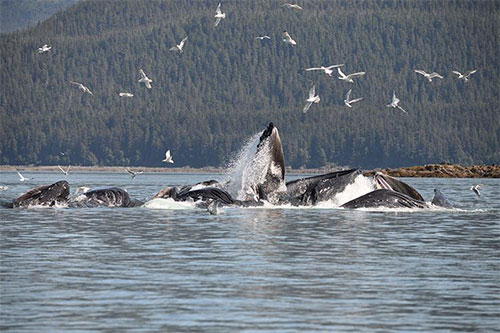


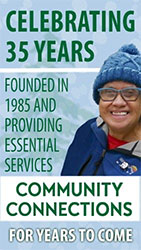











 Contact Contact 
 Webmail
Letters Webmail
Letters
 News Tips News Tips
 Copyright Info Copyright Info
 Archives Archives
Quick News
Search
 Alaska Alaska
 Ketchikan Ketchikan
 SE Alaska SE Alaska
Columns
- Articles
 Dave Kiffer Dave Kiffer
 Money Matters Money Matters
Historical
Ketchikan
 June Allen June Allen
 Dave
Kiffer Dave
Kiffer
 Louise
B. Harrington Louise
B. Harrington
Sports
 Ketchikan Links Ketchikan Links
Public Records
 FAA Accident Reports FAA Accident Reports
 NTSB
Accident Reports NTSB
Accident Reports
 Court Calendar Court Calendar
 Recent Filings & Case Dispositions Recent Filings & Case Dispositions
 Court Records Search Court Records Search
 Sex Offender Reg. Sex Offender Reg.
 Public Notices Public Notices
 Alaska Recall Alerts Alaska Recall Alerts
 Recalls.gov Recalls.gov
 AST Daily Dispatch AST Daily Dispatch
 KTN
Police Reports KTN
Police Reports
 Juneau Police Reports Juneau Police Reports
Weather,
Webcams
 Today's
Forecast Today's
Forecast
 KTN
Weather Data KTN
Weather Data
 AK
Weather Map AK
Weather Map
 AK Weathercams AK Weathercams
 AK Earthquakes AK Earthquakes

|
|

Monday
November 23, 2020
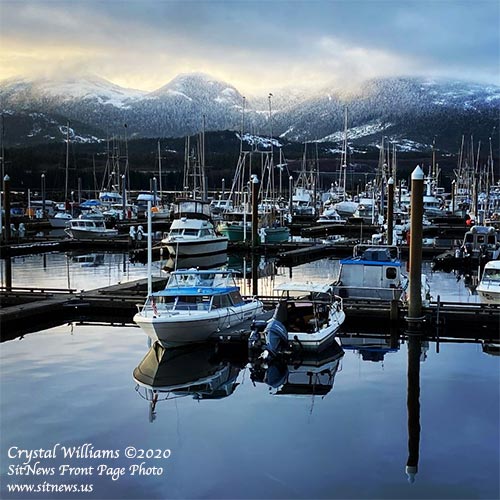
Safe Harbor in Ketchikan
Bar Harbor
Front Page Photo By CRYSTAL WILLIAMS©2020
To have your photo(s) featured on the front page,
email your photo(s) to editor@sitnews.us |
|
Alaska: Case surges create data backlog; public health officials are asking Alaskans to help -
The Alaska Department of Health and Social Services (DHSS) cautions that the surge in COVID-19 cases has strained the public health response, creating a backlog in case and contact investigations. DHSS is urging anyone who receives a positive test result to notify their own close contacts as soon as possible so individuals can quarantine without delay.
Across the nation, states are facing challenges in contact tracing and in efforts to reduce spread of the disease. Discussions are underway to consider the most effective strategies for tracking and mitigating the pandemic. Contact tracing remains a top priority for DHSS, but because of high case volume, public health officials are asking for the community’s help.
“We remain committed to doing everything we can to fight this pandemic,” said DHSS Commissioner Adam Crum. “This includes contact tracing, providing affordable and accessible testing, securing and shipping supplies to communities, supporting our health care partners and increasing mental health support. However, we’re at a point in this pandemic when we truly need everyone’s help. We’re urging Alaskans to reduce risks and take action to protect themselves, their loved ones and our communities.” - More... Monday PM - November 23, 2020
Fish Factor: Less Boots on Deck and Fisheries Jobs Lost Over Past 5 Years By LAINE WELCH - The number of boots on deck in Alaska has declined and most fisheries have lost jobs over the past five years. Overall, Alaska’s harvesting sector ticked downward by 848 jobs from 2015 through 2019.
A snapshot of fish harvesting jobs is featured in the November edition of Alaska Economic Trends by the state Dept. of Labor. The findings show that after hitting a peak of 8,501 harvesters in 2015, fishing jobs then fell to around 8,000 for the next two years before dropping again in 2018 to about 7,600.
In 2019, average monthly fishing employment was 7,653 and the industry added just 33 fishing jobs all year, reflecting growth of about 0.4 percent.
Estimated gross earnings in 2019 totaled over $1.7 billion, of which only about $660 million went to permit holders who were Alaska residents; the bulk went to fishermen who call Washington home.
Alaska’s salmon fisheries, which represent the most workers on deck, added 93 harvesters in 2019 but remained below the five year average of 4,472 jobs.
Crab harvesting followed a similar trend, gaining 26 jobs in 2019 but remaining below the fishery’s five-year average by 21 jobs. That drop is the largest in percent terms by species since 2015: a loss of nearly a quarter of that workforce.
Halibut harvesting gained just three jobs last year at 1,071, hovering below its five-year average by 28 fishing jobs, a 2.6 percent decline.
Sablefish (black cod) was the only other category to add jobs over the five years by 22, settling in at a yearly average of 646 black cod fishermen.
Two fisheries lost jobs last year – herring and groundfish, which has dropped fishing participants nearly every year since 2015. Kodiak, for example, is one of Alaska’s top groundfish ports, and lost one-fifth of its harvester jobs (162) over five years, due in great part to reduced fishing of cod.
By region, the Yukon Delta shed the largest share of fishing jobs due to poor salmon seasons. Last year’s 170 Yukon fishing participants was a 55 percent drop from 2015.
Bristol Bay lost just 11 fishing jobs over five years, a decline of 0.7 percent.
Four regions - Southeast, Southcentral, Kodiak and the Aleutians - added jobs last year but haven’t regained their 2015 highs.
Harvester jobs are tricky to calculate because fishermen are considered self-employed. Labor economists infer jobs in a given month from fish landings, and because fishing permits are tied to specific gears and boat sizes, they can roughly estimate how many people are on the job averaged across a year.
The November Trends also features processing seafood in Alaska during a pandemic and the state’s deflation statistics. “Alaska’s economy began to shut down in March due to COVID-19 and remains weak…of all the nation’s consumer price indexes generated at the state or city level, Alaska’s is the only one showing consistent overall deflation this year. The reasons aren’t yet clear, and it will take time to know whether it’s a temporary aberration, especially if the economy rebounds with any vigor,” wrote DOL economist Neal Fried.
Toppled Markets:
Tamped down prices due to toppled markets caused by the Covid virus combined with low salmon returns to many Alaska regions added up to reduced paychecks for fishermen and will mean lower tax revenues for fishing communities.
A summary of the preliminary harvests and values by the Alaska Dept. of Fish and Game shows that Alaska’s total 2020 salmon catch came in at just under 117 million fish, a 44% decrease from last season’s haul of 208.3 million fish, and the 13th lowest on record.
The statewide salmon value of $295.2 million is a whopping 56% decrease from 2019’s $673.4 million, and when adjusted for inflation, it is the lowest value since 2006.
Sockeyes accounted for nearly 59% of Alaska’s total salmon value at $174.9 million and comprised 40% of the harvest at 46.1 million fish.
Pinks accounted for 51% of the statewide salmon harvest at 51.4 million and 21% of the value at $61.8 million.
Regional tallies compared to the 2019 catches and values reveal a clearer picture of the economic hits, which are down by half or more across the board.
At Southeast Alaska, 14.3 million salmon crossed the docks valued at just over $50 million to fishermen. That compares to a catch of 32.2 million fish last year paying out at $101.8 million. - More...
Monday PM - November 23, 2020
|
"
|
Southeast Alaska: Tlingit Artist Chosen to Create Stamp for U.S. Postal Service - The U.S. Postal Service has tapped a Tlingit artist based in Juneau to create a Northwest Coast art stamp for distribution in 2021.
The design of the stamp, titled "Raven Story" by Rico Lanáat' Worl, was unveiled last week by the Postal Service as part of its Forever Stamps series.
The Postal Service had planned to unveil the stamp with Sealaska Heritage Institute (SHI) at Celebration 2020, but the event was cancelled because of the pandemic. SHI is working with the agency to hold a release ceremony next year.
The Postal Service has featured Northwest Coast art stamps in the past; in 1996, it released a stamp featuring Worl's clan uncle, Nathan Jackson, performing a Raven dance. However, this is thought to be the first time such a design has been illustrated by a Tlingit artist.
Antonio Alcalá, who served as art director on the project, reached out to Worl about creating the stamp after seeing his work for sale at the National Museum of the American Indian gift store in Washington DC.
"It was a huge honor to be invited to participate. I also felt the weight of needing to represent well since I was showcasing as a Tlingit artist on a national platform," Worl said. "I hope that as a designer I can represent on a national scale the modernity of Native people - that we're engaged in modern culture while still carrying forward our traditional heritage."
About the Artist
Rico Lanáat' Worl is a Tlingit/Athabascan social designer and artist with training in anthropology.
His work began with the development of the arts department at Sealaska Heritage Institute, implementing programs to empower the Indigenous artists of Southeast Alaska. The programs focused on developing fundamental skills and access to resources.
Through his current ongoing project, Trickster Company, he carries forward the goals of empowering indigenous artists. Through this brand he works to celebrate indigenous resilience and cross-cultural connection, break into a tourist market which profits millions of dollars from knock-off "Native" artwork, and represent the story of how Indigenous people are not only here today but engaged in modern lifestyles.
These goals are also foundational in his work outside of the brand. His crafts range from product design, digital design, jewelry making, printmaking, public art and most recently he has been working to develop his skills in sculpture and computer-aided 3D design. - More...
Monday PM - November 23, 2020
|
|
Ketchikan: Alaska Wildlife Troopers Put a Spotlight on Illegal Hunting Practices in Southeast; Citizen reports mobilize Troopers for enhanced patrol operations netting 35 citations.
- From November 4th through the 16th, 11 law enforcement officers from the Alaska Wildlife Troopers and the US Forest Service conducted an enhanced patrol of Ketchikan and the Prince of Wales Island area for hunting violations after receiving citizen complaints and reports from Troopers in the area of illegal hunting practices. Alaska Wildlife Troopers routinely patrol and conduct enhanced operations during the annual Southeast Alaska deer hunt.
Basing operations out of the Alaska Department of Public Safety’s P/V Enforcer, troopers contacted numerous hunters, including several committing violations of Alaska hunting regulations and statutes. Troopers utilized an artificial deer as well as hunting area patrols during this operation.
“The Alaska Wildlife Troopers take every report of hunting violations seriously and investigate many reports each year from across the state,” said Alaska Wildlife Troopers Captain Aaron Frenzel, Commander of AWT Southern Detachment.
Frenzel said, “During last year’s hunting season we heard increased concern from Troopers patrolling in the area and fielded citizen reports specifically for hunters illegally spotlight hunting deer and shooting from the roadway in Southeast. This special 12-day operation is a reflection of us listening to the community and appropriately taking action that puts those that are illegally taking game on notice; we are vigilant.”
While many of the hunters that troopers contacted were following Alaska hunting regulations and statutes, during the enhanced patrol, Alaska Wildlife Troopers performed the following enforcement actions: - More...
Monday PM - November 23, 2020
Alaska: Alaska tourism industry supports governor’s action on COVID-19, new health orders - The Alaska Travel Industry Association (ATIA) announced its support for Governor Mike Dunleavy’s call to Alaskans to take immediate steps to curb the spread of COVID-19 and requested Alaskans do their part to ensure Alaska’s tourism operators can keep open now and recover in 2021.
ATIA’s first priority is the safety of Alaska’s visitors, our teams, and our communities. Since the start of the pandemic, ATIA has taken steps to develop industry safety protocols and guidelines to help businesses adapt to new requirements and operating practices. Today, like many Alaskans, ATIA is deeply concerned by the rise in Alaska’s COVID-19 case counts.
Governor Mike Dunleavy issued a series of COVID-19 Outbreak Health Orders, effective November 16, 2020, including updated recommendations for all travelers visiting communities in Alaska that are considered on the road system.
“Alaskans have a reputation of supporting each other through good times and bad,” said Sarah Leonard, ATIA president and CEO. “The best way to help our friends, neighbors, and small businesses is to wear masks, wash your hands, practice social distancing, and stay home if you have any COVID-19 symptoms.”
Explore Fairbanks President and CEO and ATIA Board Director Deb Hickok said, “We are in the early throes of winter tourism season with businesses just opened or opening soon for the first time since the pandemic hit in March. It is of utmost importance we create as safe as an environment possible for our guests, employees and community.” Hickok noted the organization has just been awarded a grant from the Alaska Community Foundation for a promotional campaign designed to amplify best practices to local residents while encouraging them to explore locally.
Non-resident travelers to Alaska must continue to test prior to arrival in-state and within 72 hours of departure or show proof of a test taken, referenced in State of Alaska’s COVID-19 Outbreak Health Order number 6. Travel remains an extremely low source for COVID-19 transmission in Alaska. - More...
Monday PM - November 23, 2020 |
|
Fisheries: US seafood industry flounders due to COVID-19; Monthly fresh seafood trade dropped up to 43%, with total exports down 20% from January to August, rapid research project finds - The pandemic is putting a hurt on the seafood industry, finds the largest study of COVID on U.S. fisheries, which suggests that American fishmongers may flounder - or go belly up - without more government aid.
Monthly fresh seafood exports declined up to 43 percent compared to last year, while monthly imports fell up to 37 percent, and catches dropped 40 percent some months, reports the new University of Vermont-led study in Fish and Fisheries journal.
Over the first six months of 2020, total U.S. seafood exports are down 20 percent, and imports are down 6 percent, compared to the same period last year. Further losses are likely as restrictions increase to address COVID-19.
"Seafood has been hit harder than many other industries because many fisheries rely heavily on restaurant buyers, which dried up when the necessary health protocols kicked in," said lead author Easton White of the University of Vermont. "Restaurants represent about 65 percent of U.S. seafood spending, normally."
For context, over one million U.S. seafood workers regularly produce more than $4 billion in annual exports, much of which is processed overseas and imported back to the U.S.
While seafood data often takes several months - or longer - to compile, the researchers used pioneering methods to quickly determine the pandemic's impacts on fisheries. .
In January, demand for American imports plummeted as lockdowns began in China. Starting in March, web searches for U.S. seafood restaurants fell over 50 percent, and foot traffic at seafood markets decreased 30 percent.
Policymakers can decide 'who survives'
Aid for fisheries has been slow, partly because pandemics are not currently considered valid reasons for a fishery failure or disaster under current law. The CARES act has authorized $300M for the sector.
Even with increased demand for seafood delivery, which surged 460% for Google searches from March to April, some producers may not be able to recover without government assistance.
"Seafood is a seasonal business," said White, who won from UVM's Gund Institute for Environment. "If you have a March to June season, and can't get funds until next year, you might have to quit. Support from policymakers will decide which producers can survive."
Aid should target regions where fisheries make up a disproportionate share of the economy, including Maine, Alaska, Louisiana, and Washington, as well as tribal fisheries, researchers say.
"Foreign markets play an important role in the U.S. seafood sector, but dependence on exports leaves portions of the sector vulnerable to these global shocks," said co-author Jessica Gephart of American University. "Diversifying the sector by building local networks and consumer education campaigns can help build resilience to future shocks." - More...
Monday PM - November 23, 2020 |
|
Alaska: New Study Shows Economic Importance of Alaska’s Whale-Watching Industry - Once hunted to near extinction, whales used to be an important resource for their blubber, meat, and baleen. More recently, they have proven to be more valuable alive. Alaskan waters are rich feeding grounds for several whale species. They’ve also become an increasingly popular place for visitors to view these amazing creatures feeding, breaching, and socializing. Among Alaska’s 2.2 million summer visitors in 2019, about one quarter embarked on a whale watching tour. According to a new study, more than half a million visitors - about 553,000 people - who came to Alaska last year spent an estimated $86 million on whale watching tours. This confirms that whale watching is an important economic driver.
The study was conducted by McDowell Group and funded by NOAA Fisheries. It measured the economic impacts of 55 businesses and 187 vessels engaged in paid whale watching tours in Alaska’s coastal waters from Ketchikan to Unalaska. Based on data from 2019, the study represents a pre-pandemic baseline:
- Statewide, whale watching directly supported 850 jobs and $23.4 million in labor income
- The multiplier effects of direct spending circulating in the Alaska economy resulted in an additional 255 jobs and $13.9 million in labor income
- Statewide, industry employment impacts, including all multiplier effects, are estimated at 1,105 jobs and $37.3 million in labor income
- The total economic footprint of whale watching in Alaska is estimated at $103 million in total output (a measure of all industry-related spending in Alaska)
Whale watching supports more than a thousand jobs in Alaska. This study demonstrates that healthy whale populations underpin important economic activity for people, businesses, and communities throughout coastal Alaska.
“The whale watching industry in Alaska has grown significantly over the last decade, particularly in Juneau,” said Bob Koenitzer, Senior Consultant for McDowell Group. “Prior to this study, there was no research that quantified passenger volume and revenue. It's exciting to see that in 2019 there were more than half a million paid whale watching passengers generating tour sales of $86 million. Wildlife viewing is the top visitor activity in Alaska and images of whales are used extensively in marketing the state to visitors.”
Juneau is by far the dominant whale watching port in Alaska, with 367,000 paid whale watching tours in 2019, or two thirds of the state’s total.
“As far as we can tell, Juneau is the largest whale watching destination in the world and likely has a larger fleet and higher passenger volume than any other whale-watching port,” said Dr. Suzie Teerlink, marine mammal specialist with NOAA Fisheries’ Alaska Regional Office. - More...
Monday PM - November 23, 2020
|
FINANCIAL FOCUS: Ideas for Thanking Your Family Provided By Ben Edwards, AAMS® - It’s almost Thanksgiving. And although 2020 may have been a difficult year for you, as it has been for many people, you can probably still find things for which you can be thankful – such as your family. How can you show your appreciation for your loved ones?
Here are a few suggestions:
• Invest in your children’s future. If you have young children – or even grandchildren – one of the greatest gifts you can give them is the gift of education. You may want to consider contributing to a higher education funding vehicle.
• Be generous. Do you have older children, just starting out in life? If so, they could well use a financial gift to help pay off student loans, buy a car or even make a down payment on a home. You can give up to $15,000 per year, per recipient, without incurring gift taxes. Of course, you don’t have to give cash – you might want to consider presenting your children with shares of stock in companies they like.
- More...
Monday PM - November 23, 2020
DAVE KIFFER:
Building Ketchikan, one room at a time! - A while back a recent import to Our Fair Salmon City asked me if there was a particular type of Ketchikan architecture. You know, like salt box houses in New England or adobes in Sante Fe or panic rooms in Seattle.
I kid.
Seattle doesn't really have or need multiple panic rooms. It is a lovely place. That's how I prefer to remember it. These days everything is fine in the Emerald City. All you need is one big panic room extending from Federal Way to Edmonds. Lock it up, throw away the key, and presto!
But I digress.
Anyway, the answer to my new friend's question is "not really."
Yes, some of the houses here vaguely resemble what the Norwegians call " byggeskikk." - More...
Monday PM - November 23, 2020
RICH MANIERI: THE MEDIA WILL MISS TRUMP, AND HE’LL MISS THE MEDIA - Batman needed the Joker. Javert needed Jean Valjean. Patton needed Rommel.
The media needs Donald Trump and vice versa. What will they do without each other? We can only speculate.
CNN will have to radically change its entire programming schedule and return to actually covering the news. Remember that? Those were the days, before the 24/7 “10-reasons-why-we-hate-Donald-Trump” format.
What will become of CNN? What of Jim Acosta, Brian Stelter, Chris Cuomo and friends? For goodness sake, Jake Tapper and Van Jones cried on live TV when the network announced Biden had won the election. Aside from demonstrating a shocking absence of objectivity on what is supposed to be a news program, this outpouring of emotion shows me that these folks are in for some serious withdrawal.
It’s fine to be part of the anti-Trump resistance, but what happens after your nemesis rides off into the Mar-a-Lago sunset? The French resistance faced the same problem with the German army after World War II. “Good. They’re finally gone. Now what?” - More...
Monday PM - November 23, 2020
TOM PURCELL: THANKFUL DESPITE CANCELLATION OF FAMILY FEAST - My family canceled Thanksgiving this year – my favorite holiday since I was a kid.
Usually, 30 to 40 people gather at my parents’ house and sit next to each other at three tables. But in this year of COVID-19 – aptly named, because I and everyone I know has put on about 19 pounds since March – the grand event has been canceled.
When I was a kid in the 1970s, my parents lived in a modest house. We packed people in for Thanksgiving nonetheless, with three tables taking up every inch of space in the dining room and living room. The tight circumstances made the event all the more fun and memorable.
When I taste turkey, mashed potatoes and cranberry sauce – the cheap kind in the ribbed can! – I taste the many years of camaraderie and happiness we’ve enjoyed around those tightly packed tables.
I knew as a boy, as I still do now, that the family members around the table were our primary blessings and sources of happiness. As sad as we are that wonderful aunts and uncles have left us over time, we are thankful for the many new souls whose joy has enriched our continually growing clan. - More...
Monday PM - November 23, 2020
|
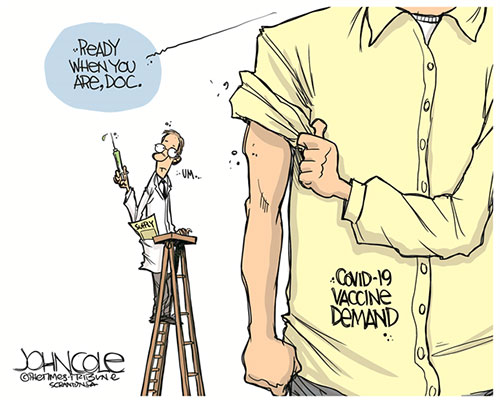
Political Cartoon: Vaccine supply and demand
By John Cole©2020, The Scranton Times-Tribune, PA
Distributed to subscribers for publication by Cagle Cartoons, Inc. |
Why the Oxford AstraZeneca vaccine is now a global game changer By MICHAEL HEAD - In the long dark tunnel that has been 2020, November stands out as the month that light appeared. Some might see it as a bright light, others as a faint light – but it is unmistakably a light.
On November 9, Pfizer announced the interim results of its candidate vaccine, showing it to be “more than 90% effective” in preventing symptomatic COVID-19 in late-stage human trials. The news was greeted with joy.
A couple of days later, the Russian Direct Investment Fund announced that the candidate vaccine they are funding – dubbed Sputnik V – showed 92% efficacy in late-stage trials. Not to be outdone, Moderna then announced that its candidate vaccine showed 94.5% efficacy.
The latest COVID-19 vaccine announcement comes from Oxford University. And, as with all of the above announcements, it came via press release. Its vaccine candidate, developed in partnership with AstraZeneca, showed an overall effectiveness of 70.4%.
In case that sounds disappointing, bear in mind that these are interim results and the figures might change. Also, the Oxford vaccine was given to one group of volunteers as two standard doses, which showed 62% effectiveness, and another group of volunteers as a smaller dose followed by a standard second dose. This raised effectiveness to 90%.
It’s not immediately clear why this is the case. Professor Andrew Pollard, one of the lead researchers on the project, described the results as “intriguing”. He also highlighted that the use of lower doses means that there would be more vaccine doses available.
There were no cases of severe COVID-19 in those who received the vaccine. And it seems to generate a protective immune response in older people. Although we’ll have to wait for the final breakdown of results to get clarification on that. - More...
Monday PM -November 12, 2020
COVID-19 vaccines were developed in record time – but are these game-changers safe?By WILLIAN PETRI - There are now two COVID-19 vaccines that, at least according to preliminary reports, appear to be 94.5% and 95% effective. Both were developed in a record-breaking 11 months or so.
I am an infectious diseases specialist and professor at the University of Virginia. I care for patients with COVID-19 and am conducting the local site for a phase 3 clinical trial of Regeneron’s antibody cocktail as a tool to prevent household transmission of COVID-19. I’m also conducting research on how dysregulation of the immune system during SARS-CoV-2 infection causes lung damage.
Despite the vaccines’ relatively rapid development, the normal safety testing protocols are still in place.
How long does most vaccine development take?
Vaccines typically take at least a decade to develop, test and manufacture. Both the chickenpox vaccine and FluMist, which protects against several strains of the influenza virus, took 28 years to develop. It took 15 years to develop a vaccine for human papilloma virus, which can cause six kinds of cancer. It also took 15 years to develop a vaccine for rotavirus, which commonly causes severe, watery diarrhea. It took Jonas Salk six years to develop and test the first polio vaccine, starting with the isolation of the virus.
The Pfizer-BioNTech and the Moderna COVID-19 messenger RNA vaccines, by contrast, have been developed in less than a year. That’s a game-changer. - More...
Monday PM - November 23, 2020
Email letters, opinions, OPEDs to editor@sitnews.us
|
Articles &
photographs that appear in SitNews may be protected by copyright
and may not be reprinted or redistributed without written permission
from and payment of required fees to the proper sources.
E-mail your news &
photos to editor@sitnews.us
Photographers choosing to submit photographs for publication to SitNews are in doing so, granting their permission for publication and for archiving. SitNews does not sell photographs. All requests for purchasing a photograph will be emailed to the photographer.
|
|








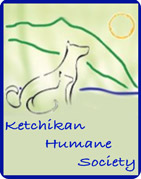


The Local Paper is
available online.
Click here for this week's printed edition (PDF)
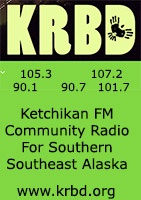
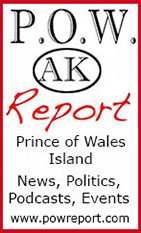

|
|
![]() Contact
Contact ![]()
![]() Webmail
Letters
Webmail
Letters![]()
![]() News Tips
News Tips![]()
![]() Copyright Info
Copyright Info![]() Archives
Archives![]() Alaska
Alaska![]() Ketchikan
Ketchikan![]() SE Alaska
SE Alaska![]() Dave Kiffer
Dave Kiffer![]() Money Matters
Money Matters ![]() June Allen
June Allen![]() Dave
Kiffer
Dave
Kiffer![]() Louise
B. Harrington
Louise
B. Harrington ![]() Ketchikan Links
Ketchikan Links![]() FAA Accident Reports
FAA Accident Reports ![]() NTSB
Accident Reports
NTSB
Accident Reports![]() Court Calendar
Court Calendar![]() Recent Filings & Case Dispositions
Recent Filings & Case Dispositions ![]() Court Records Search
Court Records Search![]() Sex Offender Reg.
Sex Offender Reg.![]() Public Notices
Public Notices![]() Alaska Recall Alerts
Alaska Recall Alerts![]() Recalls.gov
Recalls.gov![]() AST Daily Dispatch
AST Daily Dispatch![]() KTN
Police Reports
KTN
Police Reports![]() Juneau Police Reports
Juneau Police Reports ![]() Today's
Forecast
Today's
Forecast![]() KTN
Weather Data
KTN
Weather Data![]() AK
Weather Map
AK
Weather Map![]() AK Weathercams
AK Weathercams![]() AK Earthquakes
AK Earthquakes


















